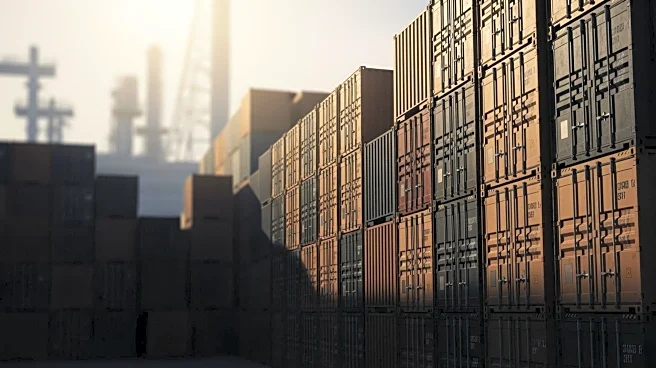What's Happening?
Krista Swanson, chief economist for the National Corn Growers Association, has highlighted the challenges facing U.S. corn growers despite a forecasted increase in farm income. The USDA's September forecast predicts
farm income to be 25% higher than last year, but a survey by the NCGA reveals widespread concern among farmers about the farm economy. Many growers fear a looming farm crisis, with 76% expressing concern and 85% believing the industry is on the brink of a crisis. The disconnect between USDA forecasts and farmer sentiment is attributed to factors such as ad hoc payments and the inclusion of the livestock sector in income calculations.
Why It's Important?
The disparity between USDA forecasts and farmer sentiment underscores the complexities of the agricultural economy. While higher farm income might suggest a robust sector, the underlying concerns of farmers point to vulnerabilities in crop production and financial stability. The reliance on ad hoc payments and the inclusion of livestock income may mask the true state of the crop sector, potentially leading to misguided policy decisions. Understanding these dynamics is crucial for policymakers and industry leaders to address the root causes of economic distress and support sustainable growth in agriculture.
What's Next?
Farmers are encouraged to focus on controllable factors such as accurate record-keeping and consistent small steps to improve their operations. The NCGA is advocating for policy changes to create competitive markets and remove non-tariff barriers in international trade. Domestic opportunities in higher ethanol blends and renewable aviation fuel are also being explored. These initiatives could provide new avenues for growth and stability in the agricultural sector, but will require coordinated efforts and long-term commitment from stakeholders.
Beyond the Headlines
The comparison to the 1980s farm crisis highlights the cyclical nature of agricultural challenges and the need for adaptive strategies. The focus on non-tariff barriers and international trade reflects broader geopolitical dynamics that influence agricultural markets. The emphasis on sustainable practices and renewable energy sources aligns with global trends towards environmental responsibility and innovation in agriculture.












